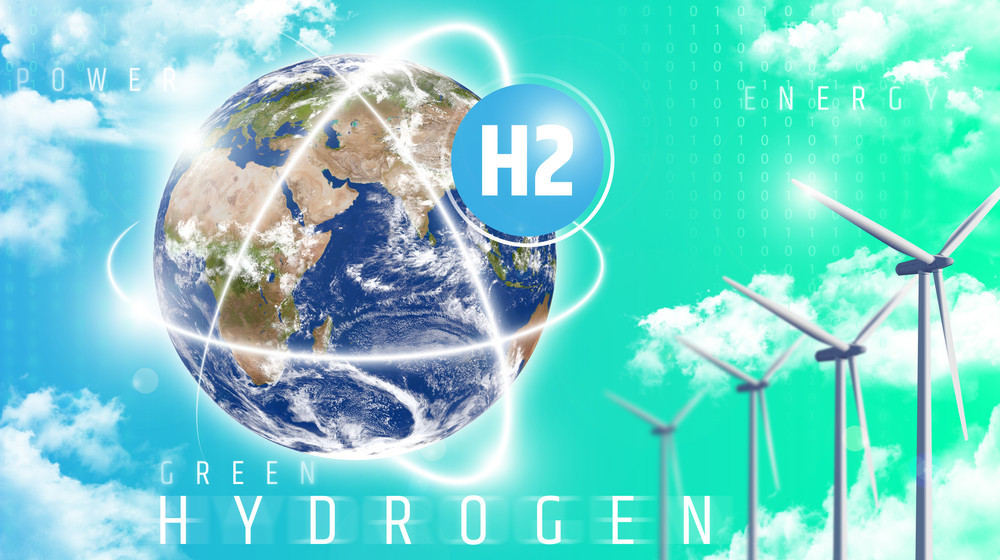Using hydrogen as an energy source is not new, it has been used as an industrial chemical for over 100 years. Green hydrogen is considered the cleanest hydrogen produced in the world. It is produced by the electrolysis of water, which splits into hydrogen and oxygen. As long as the electrolysis is carried out using renewable energy, it is a zero-emission energy source. Therefore, if produced on a large scale, green hydrogen has the potential to become a key lever for reducing the footprint of hard-to-decarbonise sectors of the economy. A study co-led by Benjamin Kelly, senior analyst, global research; Heiko Schupp, global head of infrastructure; and Callum Neal, project manager at Columbia Threadneedle Investments explains the current hype.
Government buy-in driven by zero-carbon goals
Climate change is accelerating and governments have an obligation to reduce their emissions to achieve carbon neutrality by 2050. This has a direct impact on another key factor: government commitment to doing something about it. The Hydrogen Council, an industry-backed trade group, suggests that hydrogen could reduce global emissions by 6 gigatonnes--or 17% of global emissions in 2020--by 2050. Currently, some 66 countries have set net-zero emissions targets, 20 of which have unveiled hydrogen-based roadmaps. The ability of governments around the world to support green hydrogen both financially and in terms of infrastructure could prove crucial to the viability of the industry. Last year, the Chinese government released $20bn in funding for hydrogen projects. In August 2021, the UK government addressed the development of a thriving green carbon sector to meet the challenge of decarbonising its economy with its UK Hydrogen Strategy. It aims to develop 5GW of low-carbon hydrogen production capacity by 2030, equivalent to the gas consumption of more than three million UK homes each year.
Attractive costs
The second key factor is the dramatic fall in the cost of producing green hydrogen over the last 10 years. The renewable energy used in electrolysis accounts for some 70% of the cost of hydrogen production and its price has fallen by around 70% over the last 10 years. The price of an electrolyser has also fallen by about 60% over the same period. It is reasonable to expect that these downward trends will continue, further enhancing the attractiveness of hydrogen. Bloomberg recently revised its forecast for the cost of green hydrogen in 2030 downwards by 13%.
Between December 2020 and August 2021, the number of green hydrogen projects increased more than threefold, with 359 large-scale projects announced globally. Europe is leading the way with $130bn of investment, but other regions are catching up. China is also emerging as a potential hydrogen giant, with more than 50 projects in the pipeline since it announced its commitment to achieving carbon neutrality by 2060. Globally, there are 228 hydrogen projects underway across the entire industry, including 17 very large-scale production projects.
If we add the rise of startups specialising in hydrogen production by means other than electrolysis, the Hydrogen Council estimates that total investment in the sector could exceed $300bn by 2030 and, according to the Energy Transitions Commission, it could reach around $15trn by 2050.
But demand is still limited
However, the analysts at Columbia Threadneedle Investments point out two obstacles to the general adoption of hydrogen. Firstly, demand is currently limited. Although on the production side, government support is growing, technology is advancing and costs are falling, demand for hydrogen is low at present. However, commitments to achieve carbon neutrality could stimulate demand. Further infrastructure development will be key to making green hydrogen the panacea for decarbonisation.
Secondly, the unpopularity of hydrogen in society is a stumbling block. Its use as a fuel has been decried since the Hindenburg disaster in 1937 (the German passenger airship LZ 129 caught fire and was destroyed when it tried to dock). Consumers and investors need to be made aware of the promise of hydrogen and convinced of its safety before it can be widely used. Asset managers appear to be increasingly aware of its potential and are working to raise investor awareness. They believe there are huge opportunities for the infrastructure sector, as without infrastructure projects there will be no large-scale hydrogen consumption.
The potential for green hydrogen to revolutionise the sustainable energy sector is real, judging by the huge progress we have seen in the last 12 months, both in terms of technological advances and government support. A decade from now, we may wonder why hydrogen was ever debated. However, the lack of demand is now the main barrier to the widespread deployment of hydrogen. The recent rise in energy prices may accelerate action over the next twelve months.
Originally published in French by and translated for Delano
